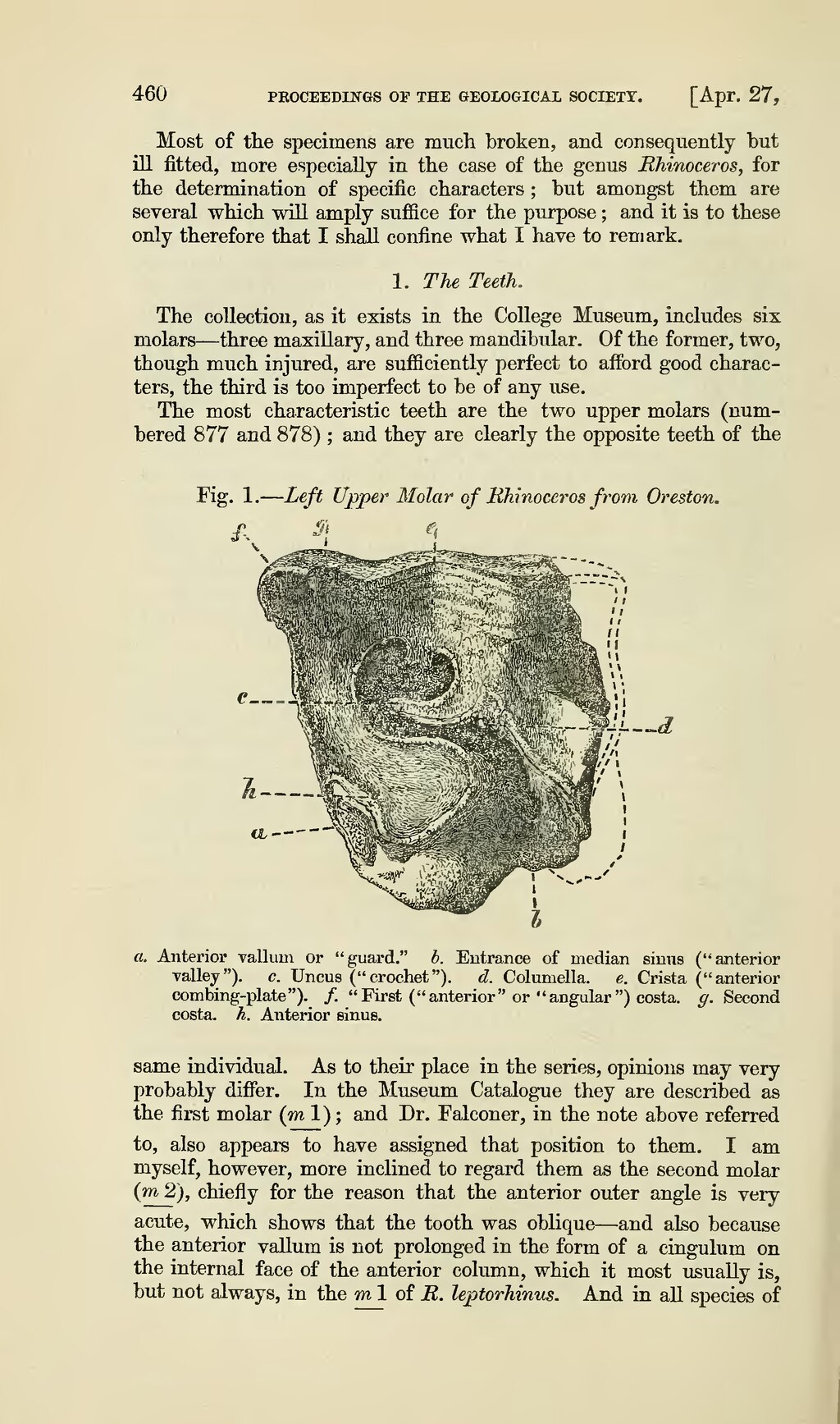460 PROCEEDINGS OF THE GEOLOGICAL SOCIETY. [Apr. 27,
Most of the specimens are much broken, and consequently but
ill fitted, more especially in the case of the genus Rhinoceros, for
the determination of specific characters ; but amongst them are
several which will amply suffice for the purpose ; and it is to these
only therefore that I shall confine what I have to remark.
1. The Teeth.
The collection, as it exists in the College Museum, includes six molars — three maxillary, and three mandibular. Of the former, two, though much injured, are sufficiently perfect to afford good charaters, the third is too imperfect to be of any use.
The most characteristic teeth are the two upper molars (numbered 877 and 878) ; and they are clearly the opposite teeth of the
Fig. 1. — Left Upper Molar of Rhinoceros from Oreston.
a. Anterior vallum or "guard." b. Entrance of median sinus ("anterior
valley"). c. Uncus ("crochet"). d. Columella. e. Crista ("anterior
combing-plate"). f. "First ("anterior" or "angular") costa. g. Second
costa. h. Anterior sinus.
same individual. As to their place in the series, opinions may very probably differ. In the Museum Catalogue they are described as the first molar (m l); and Dr. Falconer, in the note above referred
to, also appears to have assigned that position to them. I am myself, however, more inclined to regard them as the second molar (m 2), chiefly for the reason that the anterior outer angle is very acute, which shows that the tooth was oblique — and also because the anterior vallum is not prolonged in the form of a cingulum on the internal face of the anterior column, which it most usually is, but not always, in the m l of R. leptorhinus. And in all species of
